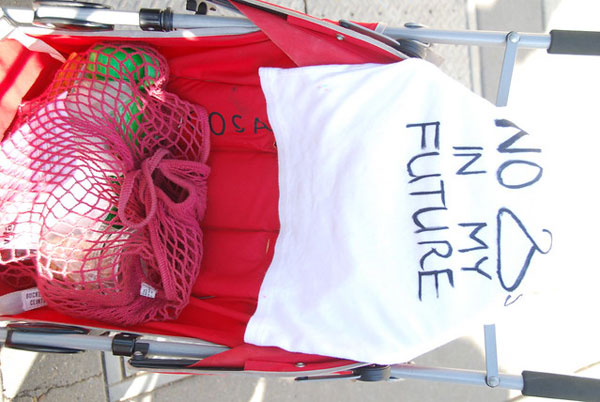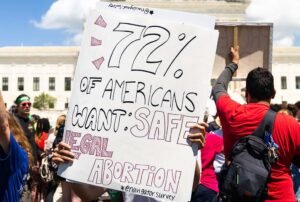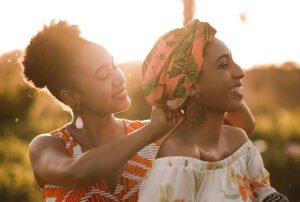
May 19, 2019; The Guardian and The New York Times
NPQ has been reporting regularly on the growing number of states passing laws that narrow options for women to end pregnancies under onerous threats to punish women themselves and the doctors who provide the services. The goal in this race is to get an extreme law reviewed by the US Supreme Court in an attempt to overturn Roe v. Wade and upend the constitutional right to abortion.
Alabama has in the last week led the states in passing the most restrictive law. But Georgia, Ohio, Missouri, and Utah are all aligned in their efforts to limit women’s rights to abortion, often before most women even know they are pregnant. NPQ has written about the severity of the Georgia law, which could see women receiving 99-year prison terms for having an abortion. (In response, a number of Georgia district attorneys have questioned this law’s constitutionality and stated publicly they will not prosecute women for having abortions in Georgia.)
This race to the Supreme Court might seem well orchestrated, but, apparently, it’s the result of a network of activists who know each other but act independently to move their anti-abortion mission forward. Now, things are aligning for them all.
“It’s not like there’s some master planner out there saying, ‘This state should do this, and this state should do that,’” said Samuel Lee, a longtime lobbyist for anti-abortion legislation in Missouri. “But there are some creative people out there in different states trying different things.”
[…]
Activists are more likely to coordinate through their Catholic and evangelical churches than on mass political listservs or email chains. In some states the local Right to Life chapter may be the strongest activist hub. In others, it might be the Concerned Women for America chapter, or the regional Family Policy Council group.
The activists do not often agree on whether their priority should be to pass a six-week ban or a 20-week one. But together, their efforts have magnified the voices of millions of Americans who want abortion to be illegal, and they are prevailing over millions of other Americans who do not.
Sign up for our free newsletters
Subscribe to NPQ's newsletters to have our top stories delivered directly to your inbox.
By signing up, you agree to our privacy policy and terms of use, and to receive messages from NPQ and our partners.
On the other side, some states are working to codify abortion rights to ensure that even if Roe v. Wade is overturned at the federal level, their state constitutions and laws will protect reproductive health choices, including abortion. In Vermont, H.57, which would declare abortion to be a “fundamental right,” is sitting on the desk of its Republican Governor who has not determined what to do with it. In addition, there is a pending ballot initiative for 2022 to amend the state constitution to make abortion a right. In Illinois, the Reproductive Health Act (HB 2495), which would also secure abortion rights in the state, is being held up in committee. Massive protests are taking place in all parts of Illinois to move this bill before the close of the legislative session at the end of May. Maryland has plans for legislation in 2020, and New York remains the exemplar for the pro-choice legislative world, with the signing into law of the Reproductive Health Act (S. 240) in January 2019.
That’s not to mention the reaction from those who want to do something in response to the repressive, anti-abortion laws, which has not been small. Donations have been rolling in to the Yellowhammer Fund, which supports abortions for low-income women in Alabama. National sports teams have asked fans to donate a dollar per point scored to these funds, and others are donating to the American Civil Liberties Union (ACLU), which will be fighting these laws in the federal courts.
In all of this, those who will be most hurt by these laws are poor women and women of color. Women will find ways to have abortions if they are outlawed, but for them, those abortions will be dangerous and unsafe. Data from before Roe v. Wade illustrate the likely consequences should its protections be reversed. In 1967, according to one estimate, women in the US had 829,000 illegal abortions (estimates for the period range from 200,000 to 1.2 million a year in the 1950s and 1960s). About 200 women were reported to have died due to illegal abortions in 1965, a number that is equivalent to 17 percent of all deaths attributed to childbirth or pregnancy that year. And, as Rachel Benson Gold, vice president of public policy for of the Guttmacher Institute reminds us, the 200 deaths “are just the number that were officially reported; the actual number was likely much higher.”
It is also the case that the states enacting these anti-abortion laws are ill-prepared to provide the healthcare, housing, and childcare needed to raise these children they’re demanding be carried to term. An amendment was introduced to the Alabama bill that would have required the state pay childbirth costs and provide healthcare for the child up to age 13. Alabama had restrictions on food stamps and limits its subsidies for childcare. The amendment failed.
In an insightful editorial in the Washington Post, E.J. Dionne, Jr. summed up a possible solution:
A better way forward would start by reducing the incidence of abortion through better family-planning programs. We can also commit our country to giving poor women who bring children into the world the help they need after giving birth. The abortion rate is six times higher among poor women than among affluent women. This is not because the rich have more moral qualms. The poor, unlike the wealthy, live with the fear that they will not be able to give their children the life they deserve. And if we truly honor the responsibilities mothers take on—in deeds, not just words—we can make the rules surrounding work more family-friendly.
The bottom line: If you truly want to defend the right to life, support women and lift up the poor.
—Carole Levine












